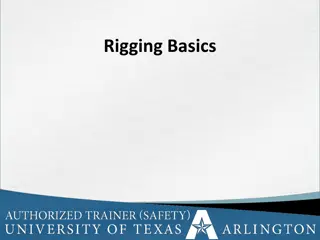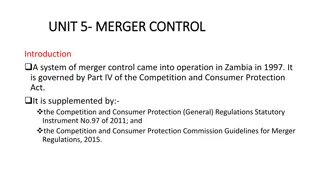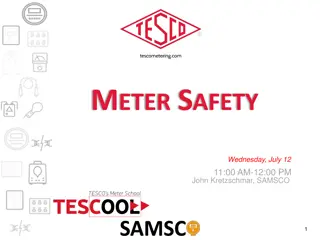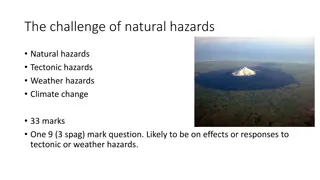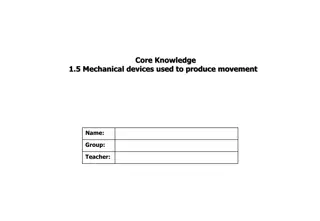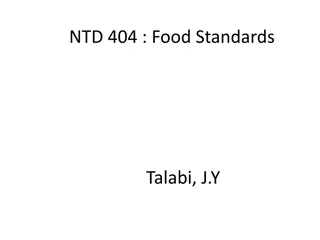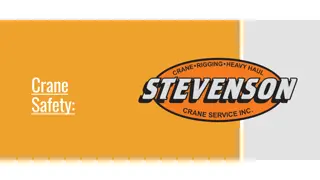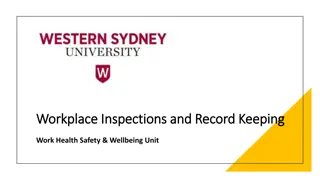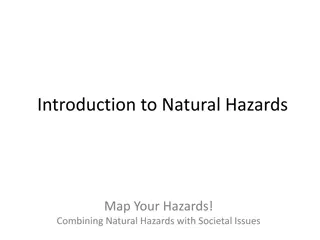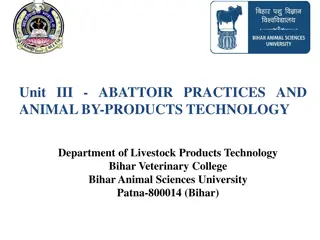Preventing Mechanical Hazards in Consumer Products: U.S. Regulations
The U.S. Consumer Product Safety Commission (CPSC) enforces various requirements to prevent mechanical hazards in consumer products. These regulations cover toys, children's clothing, infant products, and more. Standards such as ASTM F963 outline specific safety measures for small parts, strangulation risks, suffocation hazards, and ingestion concerns. Compliance with these standards is crucial to ensure the safety of children and infants using these products.
Download Presentation

Please find below an Image/Link to download the presentation.
The content on the website is provided AS IS for your information and personal use only. It may not be sold, licensed, or shared on other websites without obtaining consent from the author. Download presentation by click this link. If you encounter any issues during the download, it is possible that the publisher has removed the file from their server.
E N D
Presentation Transcript
U.S. Consumer Product Safety Commission Office of International Programs Some existing requirements to prevent mechanical hazards in the USA This presentation was prepared by CPSC staff. It has not been reviewed or approved by the Commission and may not reflect its views. 1
Toys ASTM F963 Small Parts Toys for children under 3 years old cannot contain small parts, as defined Toys for children under 3 years old cannot generate small parts during use and abuse testing 2
Toys ASTM F963 Strangulation Pull along toys: strings no longer than 6 inches 3
Toys ASTM F963 Crushing and suffocation Toy chests: ASTM F963 defines maximum lid drop specifications to avoid crushing and suffocation 4
Toys ASTM F963 Ingestion Expanding materials in toys must fit through gauge to pass the size test 5
Childrens Clothing -- ASTM F1816-97 Drawstrings strangulation and dragging Drawstrings are not allowed at the hood, neck, and waist area in sizes 2T through 12 6
Infant Walkers ASTM F977-12 Fall hazard Walkers have to be have design elements to prevent going through doorways and falling down stairs 7
Infant Bath Seats ASTM F1967-13 Drowning hazard Bath seats have to meet stability and leg opening requirements 8
Bedside Sleepers ASTM F2906-13 Entrapment hazard Bedside sleepers must meet minimum side height requirements, among others 9
Sling Carriers - ASTM F2907-15 Fall and suffocation hazard Sling carriers have to meet structural integrity requirements and have appropriate warning labels 10
Childrens Folding Chairs ASTM F2613-14 Laceration and amputation hazard Children s folding chairs must have a locking mechanism or be designed with adequate clearance to protect fingers, hands, and toes 11
Full-Size Cribs 16 CFR Part 1218 Entrapment and suffocation hazard Standard for full-size cribs seeks to prevent injuries or deaths from falls or entrapment due to parts failure, dislodgement, or poor maintenance or assembly of the crib. 12
Dressers - ASTM F2057-14 Stability/tip over hazard Sets specification for stability of clothing storage units to prevent tip overs 13







